First published in the book, Sports Car Color History Mazda RX-7 (1994) by John Matras
1989 Mazda RX-7 Infini IV; photos by John Matras
The first Infini was a 1987 Mazda 323. But it was more than an ordinary 323, more than the turbocharged 323 GT already on the market in Japan, even more than the all-wheel-drive GTX pocket rocket. The Infini was a special version of the latter. “Tenacious” was the adjective of choice for this Japanese family sedan turned Bad Boy.
Flash forward from that time to 1991. Infini had become synonymous with Mazda “skunk works” projects, and a special RX-7, the Infini IV, is the ultimate production Infini and the ultimate RX-7, at least in terms of performance. Essentially it is the turbo with more power and less weight. As a more elemental RX seven, Mazda said it offered a glimpse of the future RX-7, do for a 1992 introduction.
Eager to inform (and get some ink in the enthusiast magazines), Mazda shipped over one Infini IV for a limited stateside stay. So limited, in fact, that only Road & Track and AutoWeek had a look at the car before it was shipped back home. Whether this short visit helped to reveal the third-generation is debatable, but it certainly frustrated Americans who wanted just that much more from the current-generation RX-7.
The Infini IV (“RX-7” actually appears nowhere on the car) was a true Japanese-market car, and as such had right-hand drive. Once acclimated to this “inverted” driving position, American testers most noted that this was indeed an RX-7 with a sharpened edge. The cockpit was tighter, with bolstered, hard-to-get-into but snug-as-a-baseball-in-a-glove seats. The seats were not adjustable for rake, limiting headroom for taller drivers, but were lighter than the cushy stock seats.
The compact cockpit was exaggerated by rectangular pads on the center console and door which served as braces for the driver in hard cornering. A foot rail was added on the left side for passenger comfort. A final touch was a fat-rimmed Momo steering wheel. And for the dedicated sports car types, the otherwise standard air-conditioning was deleted. Every ounce must go!
Mazda engineers dropped weight from the Infini by removing insulation, which quiets the beast but adds nothing to performance. The lighter, less restrictive and noisier exhaust system helped bring weight down to 2700lb, 287lb less than the U.S. specification RX-7 Turbo. The exhaust also lets the turbo pump the rotary for another 15 horses over the American market 200hp rating. The drivetrain, with a five-speed manual transmission, was otherwise stock except for the Torsen imited-slip differential.
Suspension modifications included spring rates increased 10 percent and shock absorbers 25 percent stiffer on compression and rebound. Less compliant bushings were also used, including rear suspension bushings that defeated the DTSS passive rear steering suspension. A strut bar (a brace between the front strut towers) stiffened the chassis. With the stiffer springs, a smaller, 23mm anti-roll bar was fitted up front. Overall, the suspension sets the Infini IV about 1 inch lower than standard right height of US models.
Tires developed by Pirelli specifically for the Infini IV, P-Zero 205/55-16s, were mounted on standard-pattern BBS wheels.
Harder brake pads were installed in the four-piston front and single-piston rear disc brakes borrowed from the Turbo. Instead of the speed-sensing electronically controlled power steering of the Turbo and other upgrade RX-7s, the Infini had the engine-speed dependent power steering from the base model. And although the ratio was slowed from 15.2;1 to 17.4;1, the simpler system, according Mazda engineers, gave better feel for autocross and racetrack events.
Externally the Infini IV was identified by an infinity symbol decal above the left tail light, infinity symbol hubs on the BBS wheels, amber fog lamps, and obligatory green-black paint. It was priced about $2500 above and RX-7 Turbo in Japan, the only place it was sold. It was not a homologation special, since there was no appropriate racing class in Japan for the model. It was just, well, a hotrod.
Test drivers noted the firmer suspension and lack of sound deadening. The turbocharger’s whistle and the rotary exhaust note stood in for the missing radio. Road & Track liked Pirellies and prodigious cornering ability. Testers describe the car as “neutral as Switzerland,” and it posted a 0.91G on the skidpad. It took 7.0 seconds to go 0-60mph, and a quarter-mile required a mere 14.9 seconds at 94mph. Stopping was impressive, too, as the discs hauled down the two-seater from 60 mph in just 141 feet.
“Through the years, we’ve seen sports cars grow larger, softer, and heavier,” said Road& Track, “which makes Mazda’s reversal of the trend even more exciting. Let’s hope that this Japanese-market Infinis chassis is truly representative of the new generation’s, and that Mazda’s stylists have created a shape worthy of the mechanicals.”
Let’s hope that Road & Track had a firm grip on its collective hat, because if the magazine’s staff liked the Infini IV, they were going to love the new RX-7.











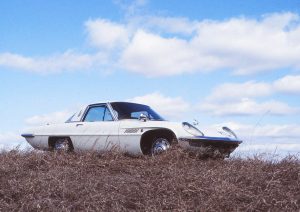
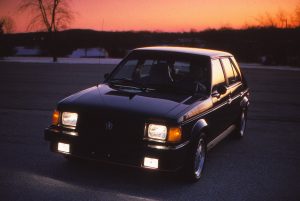
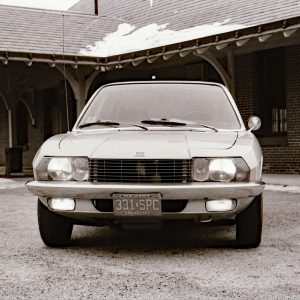
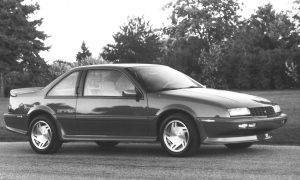
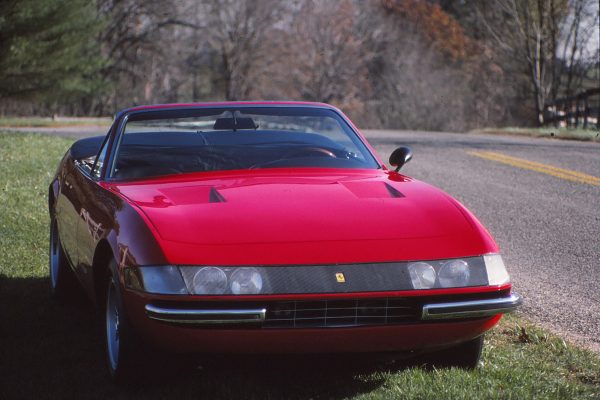


What Do You Think?
You must be logged in to post a comment.